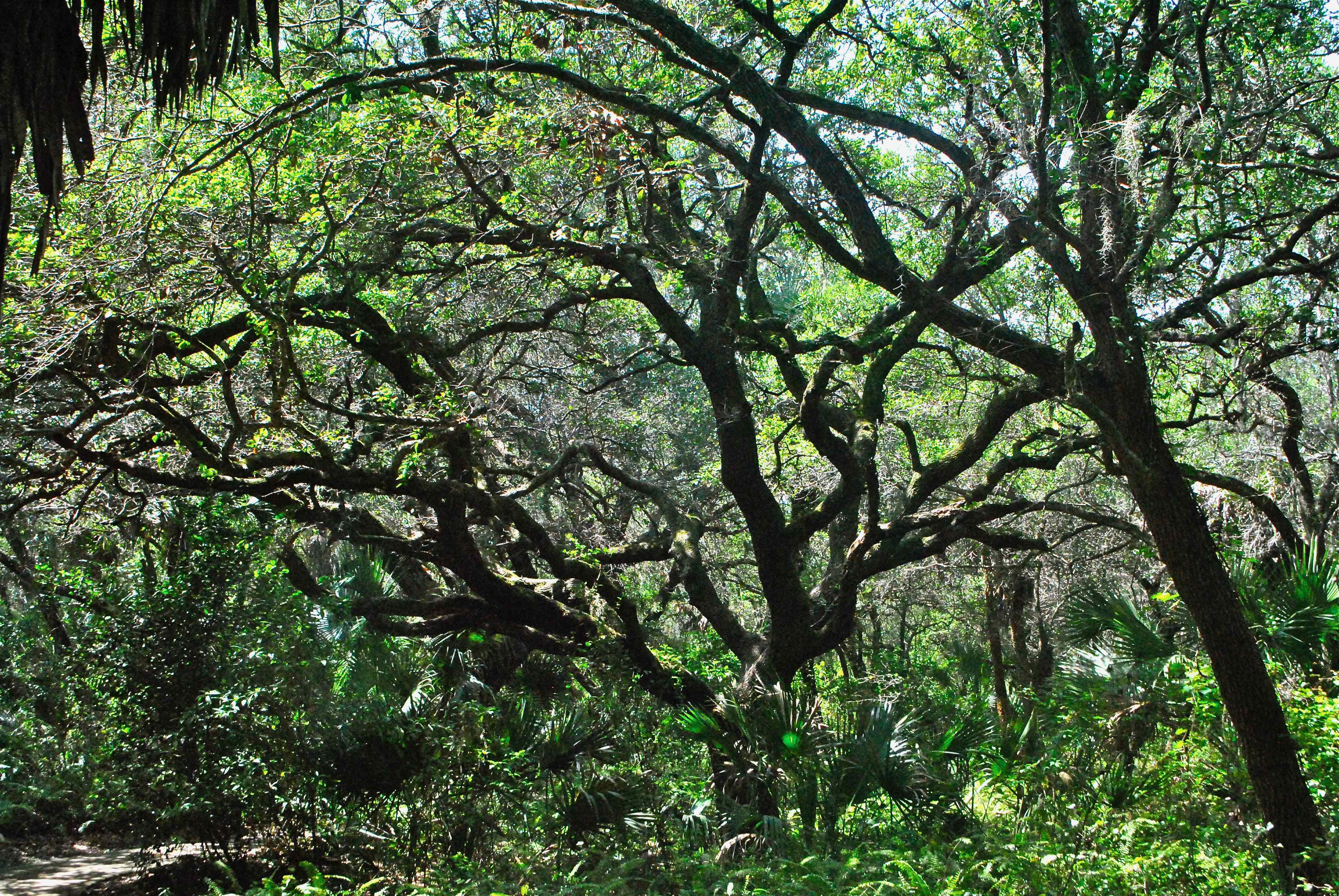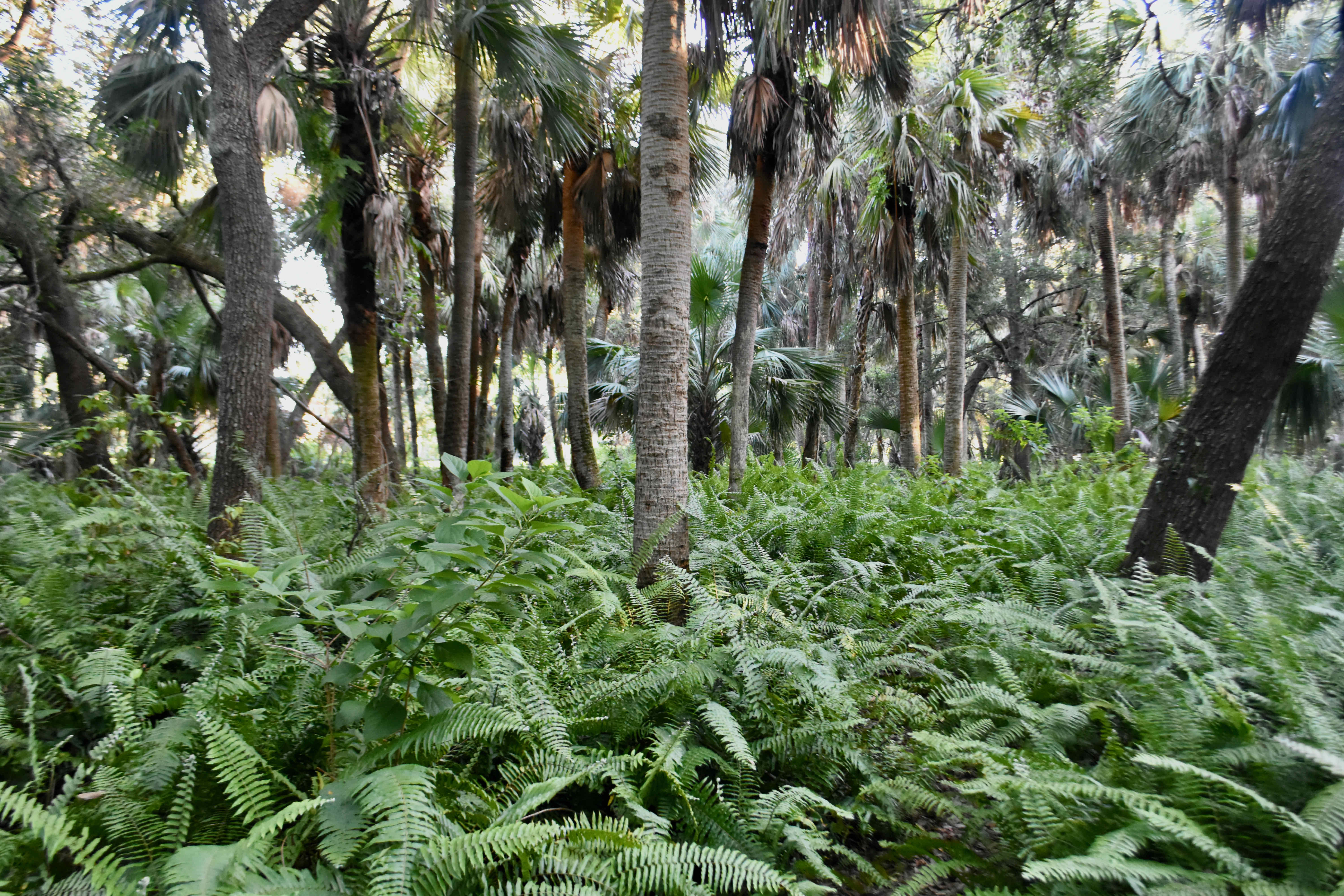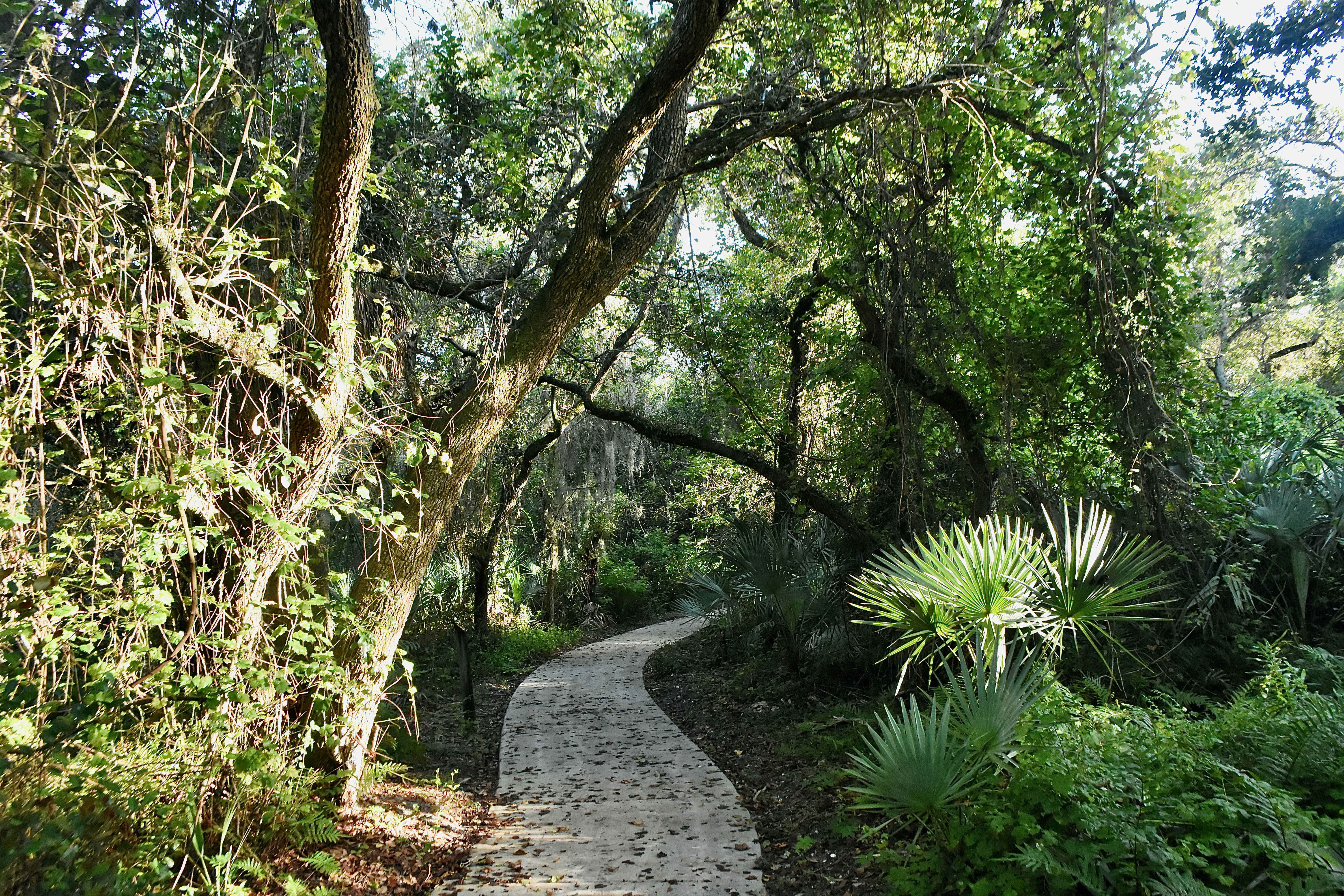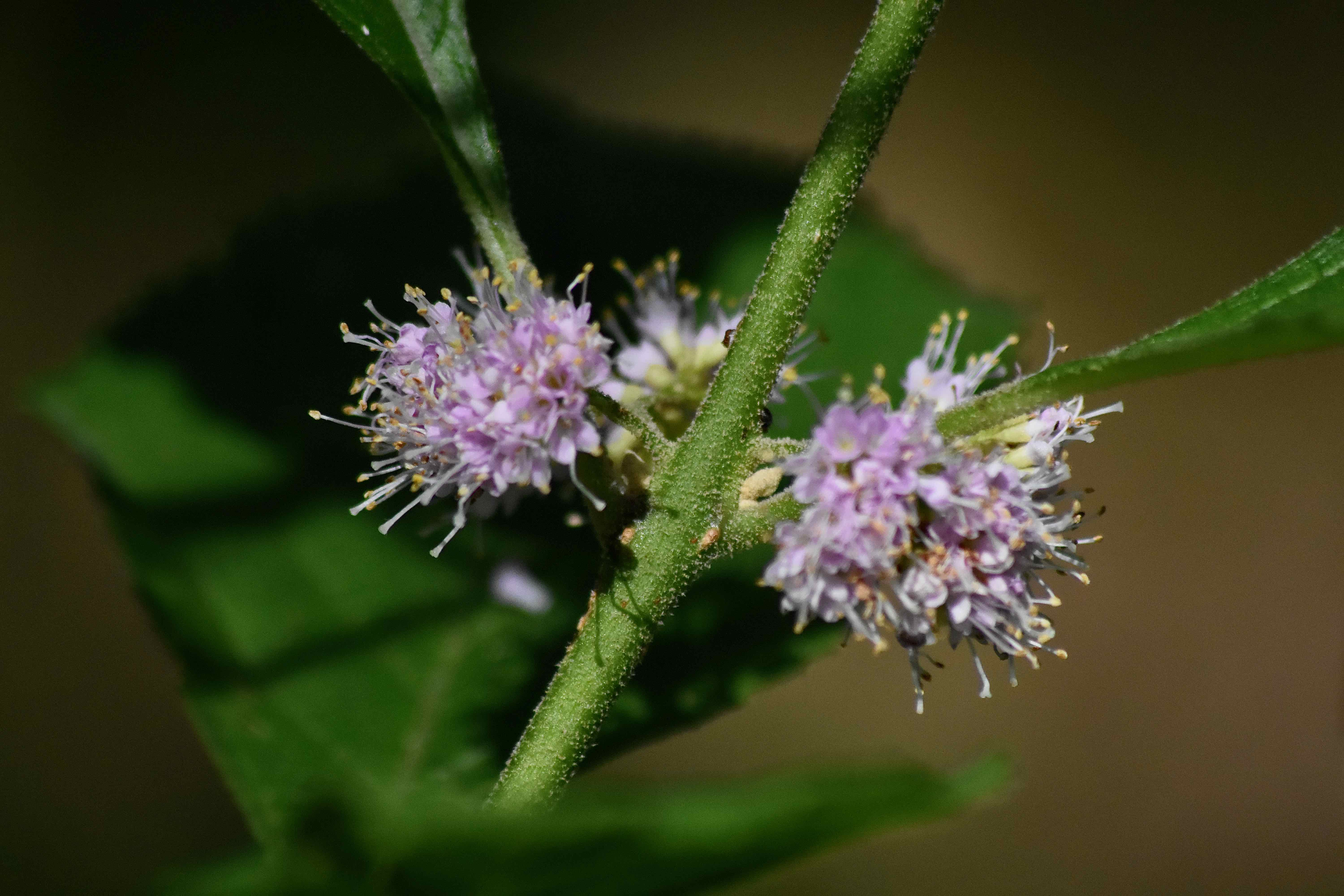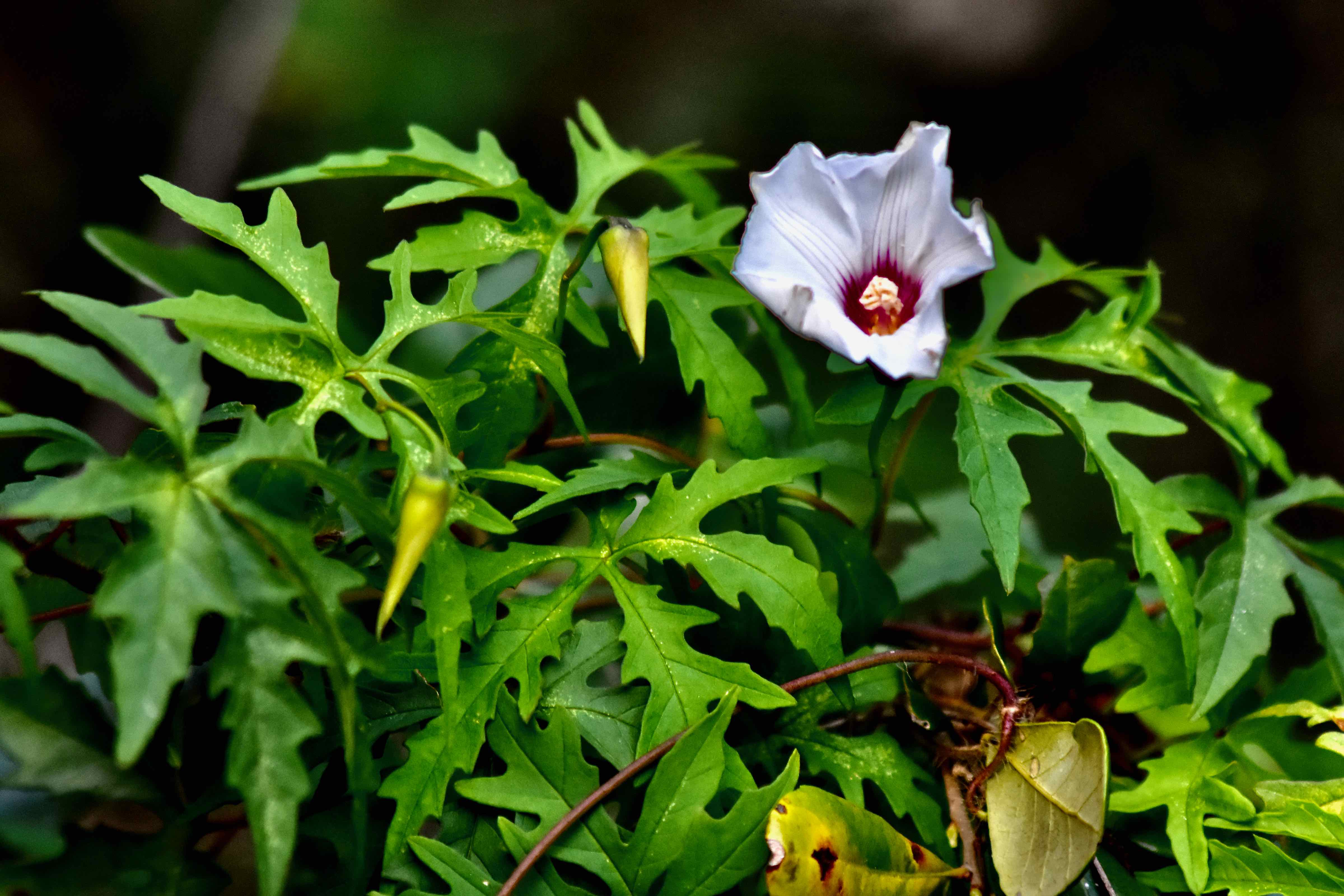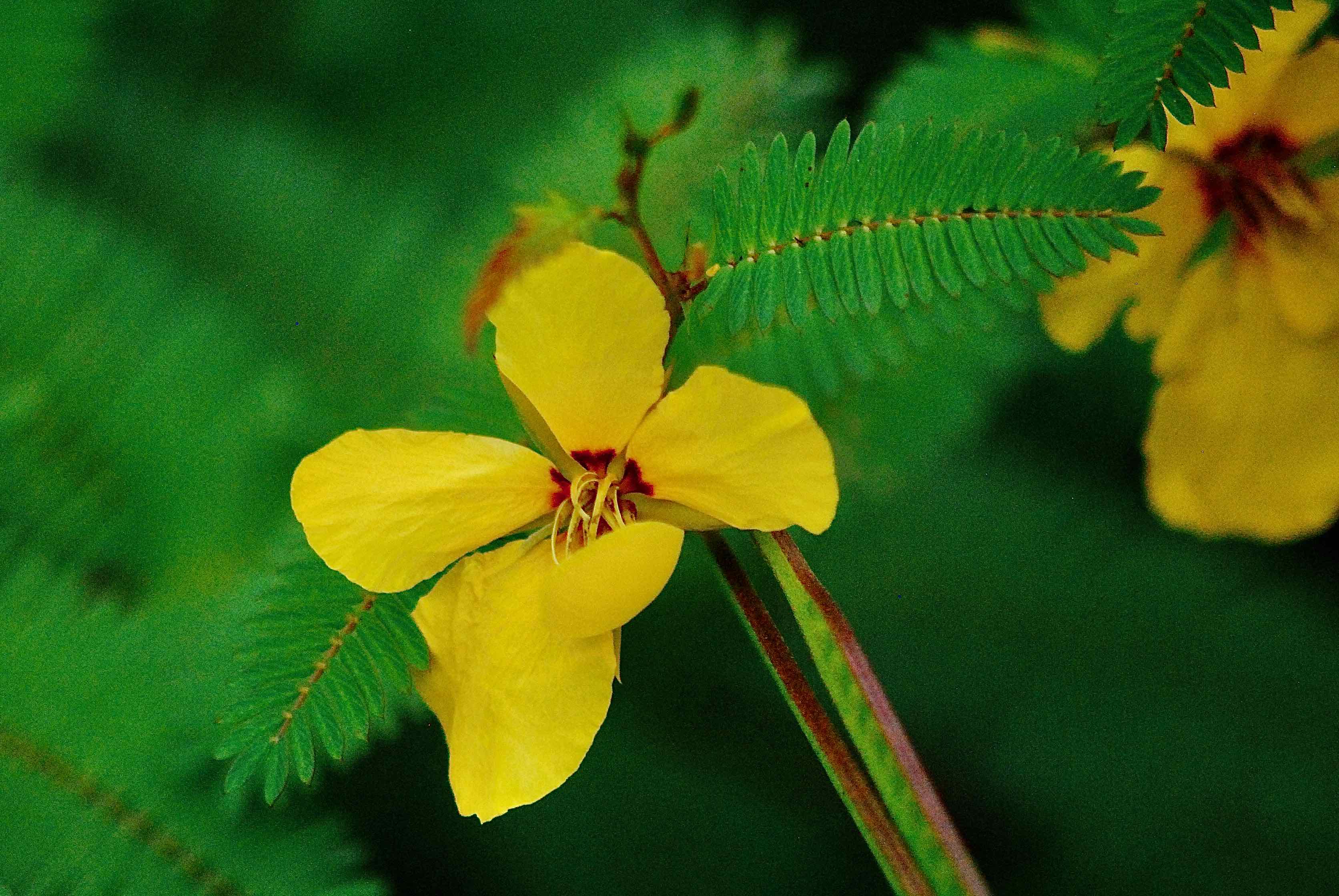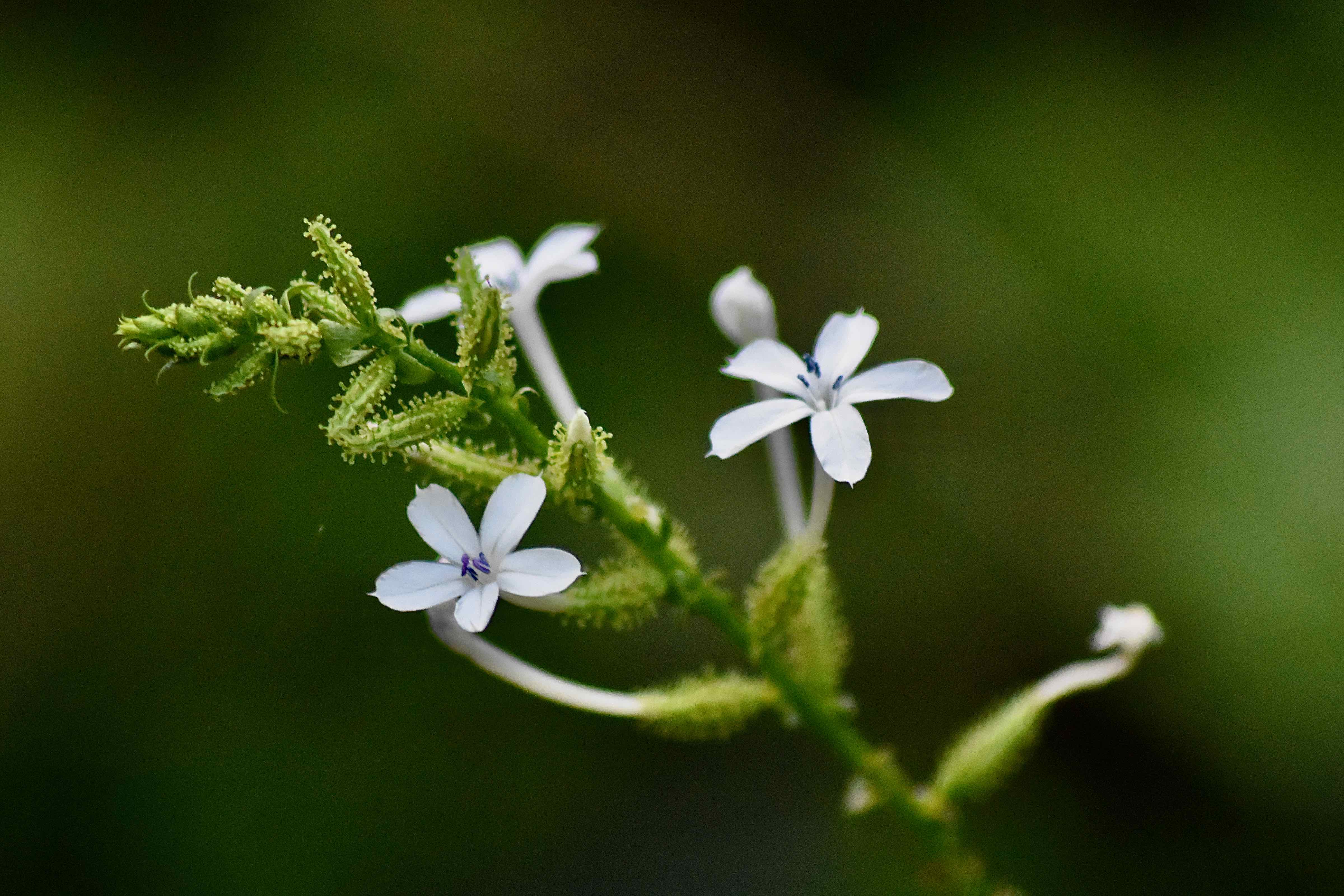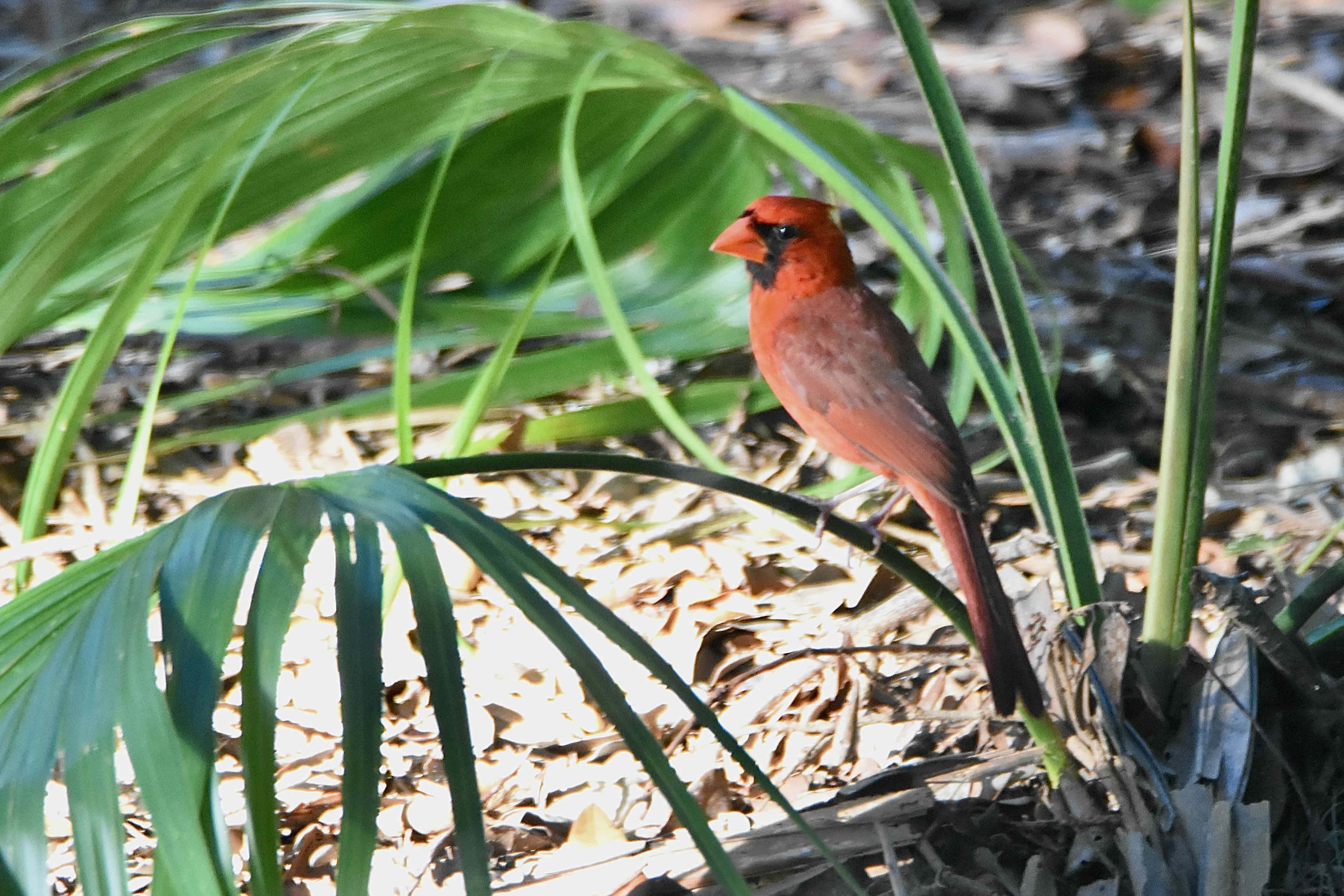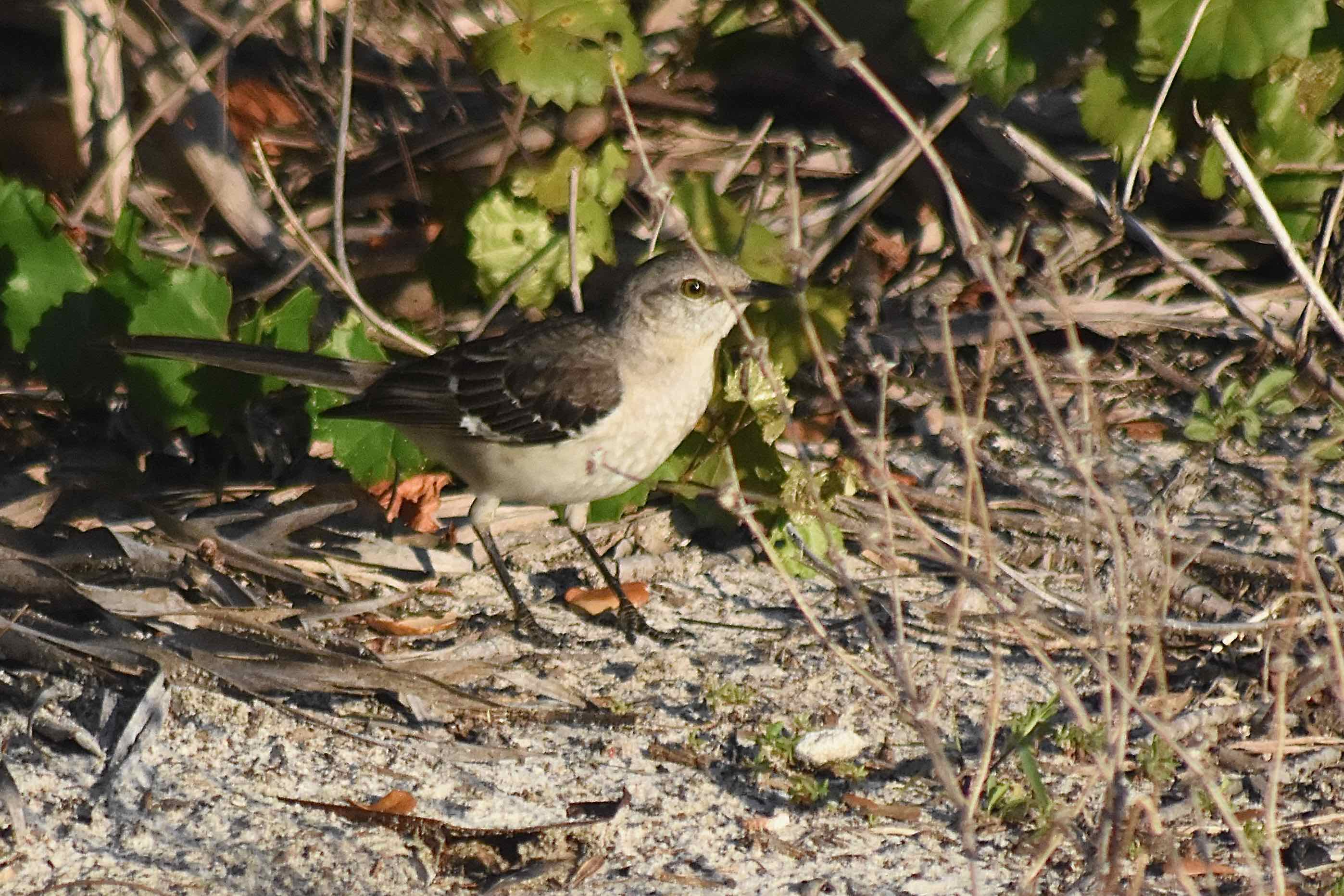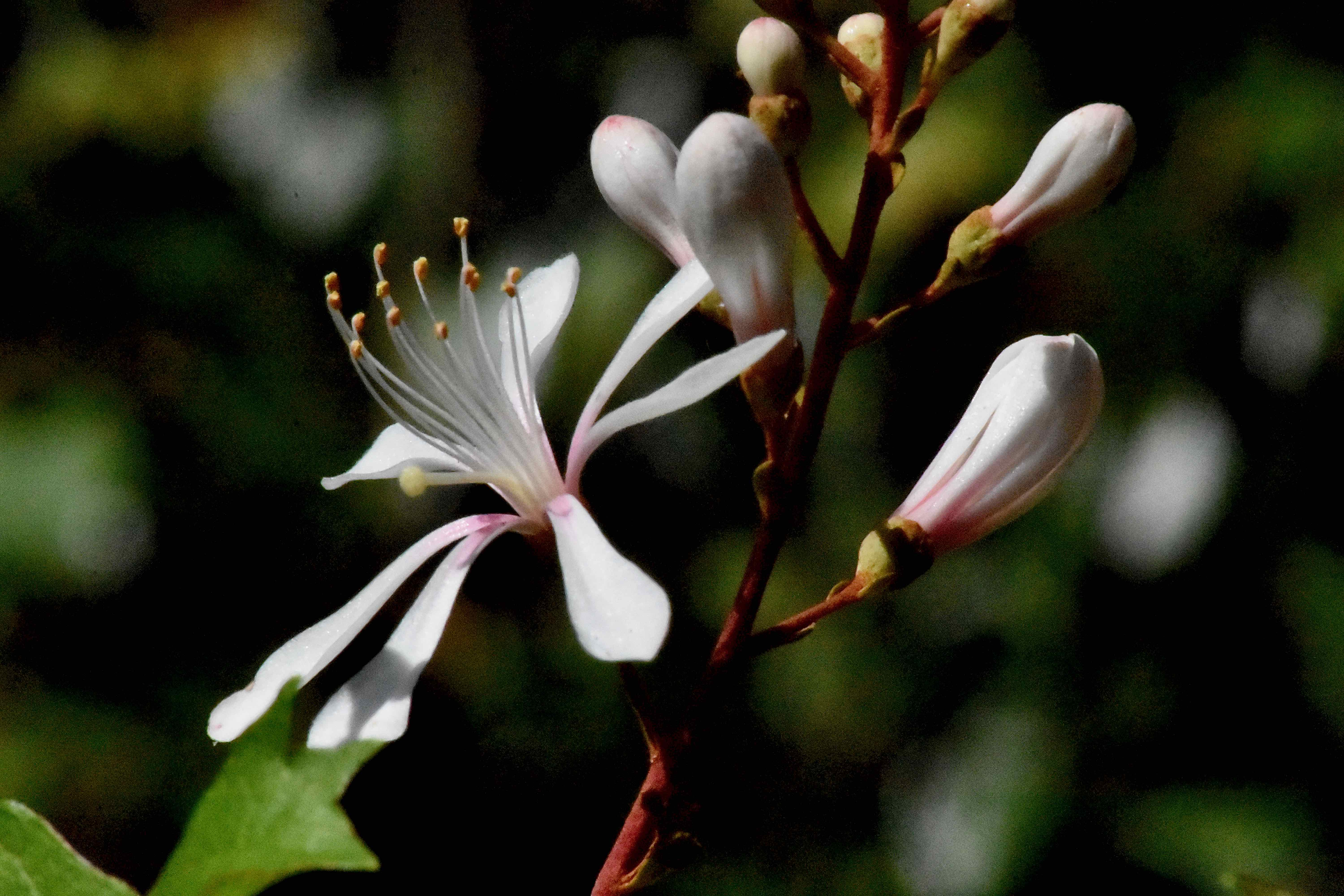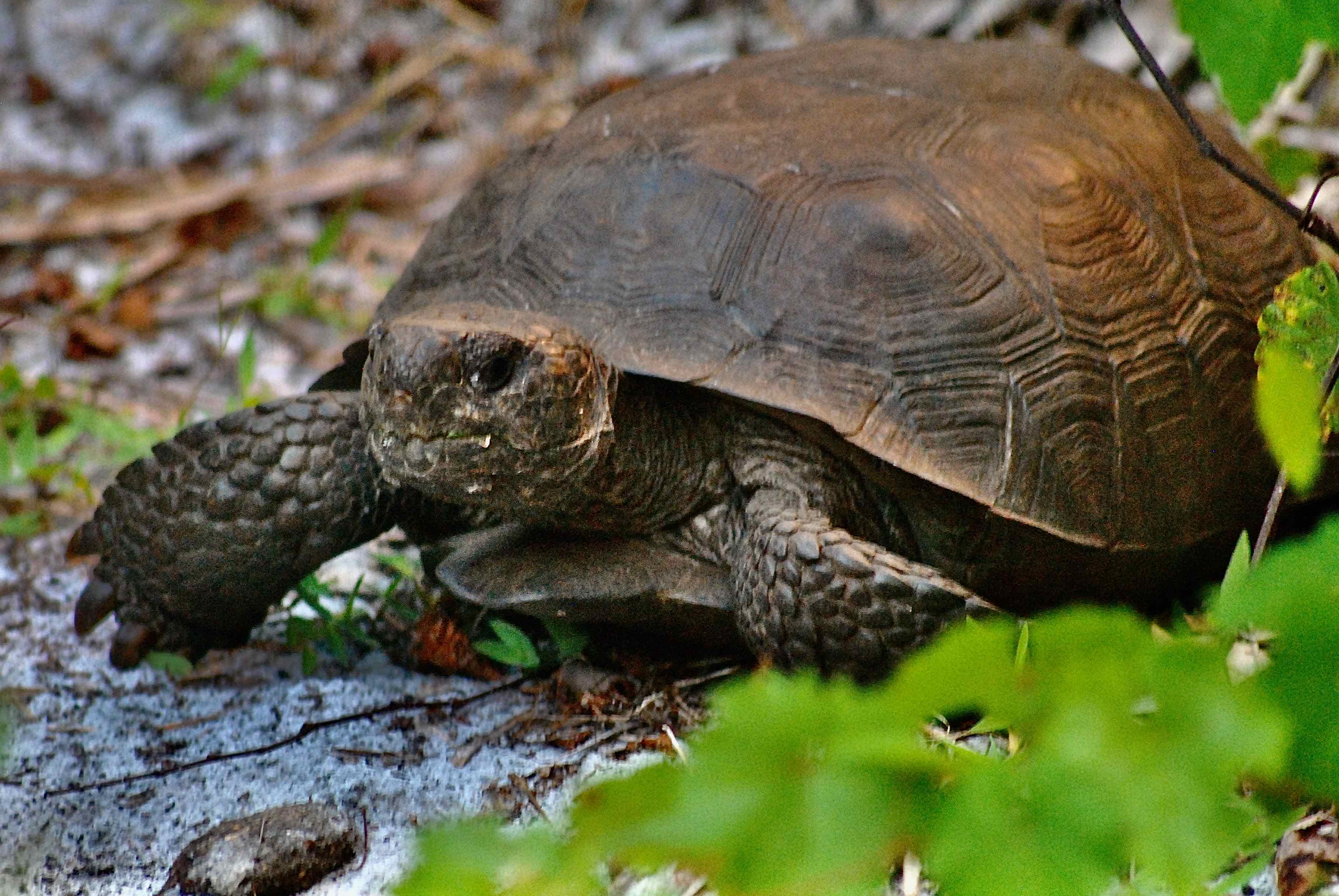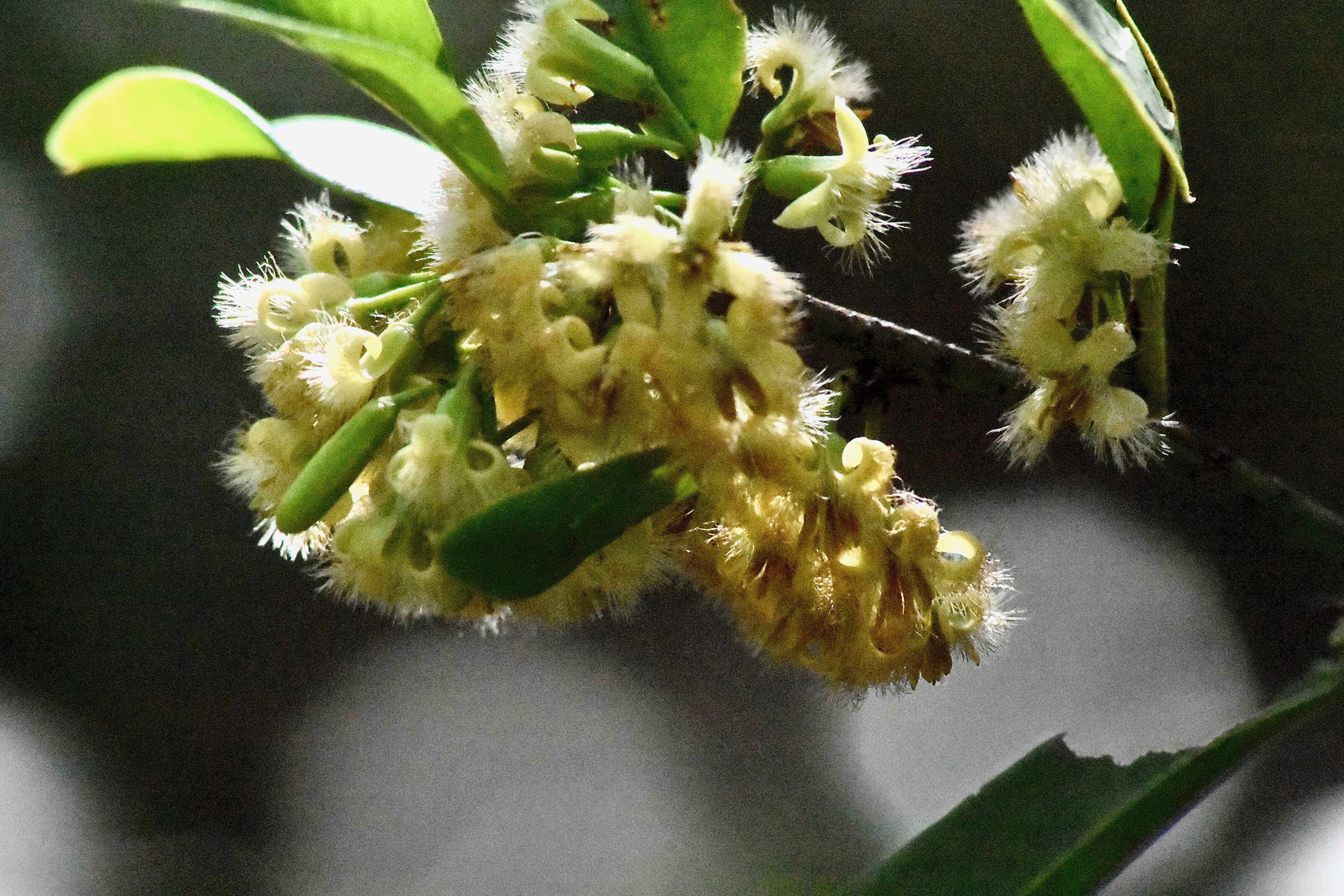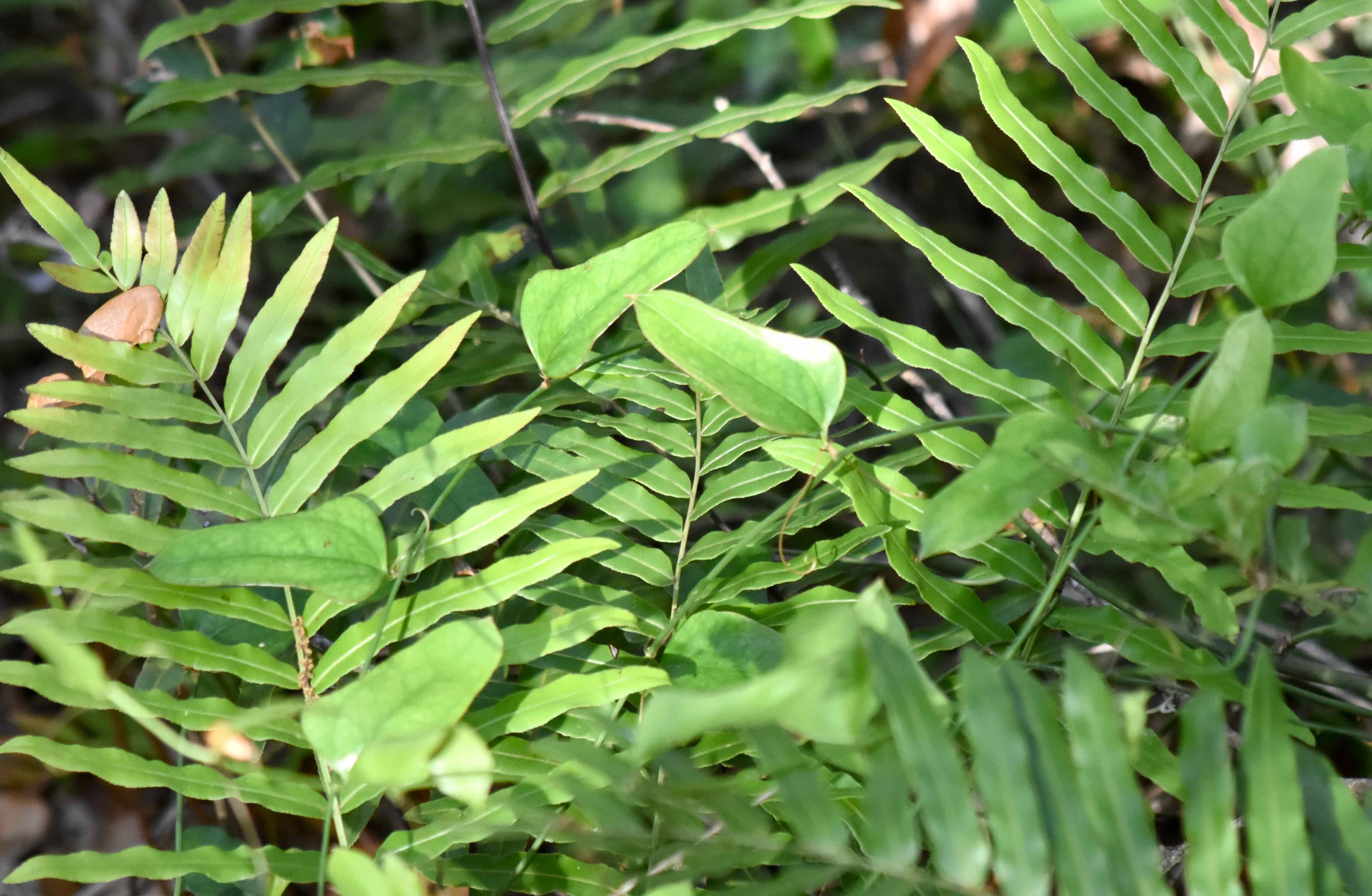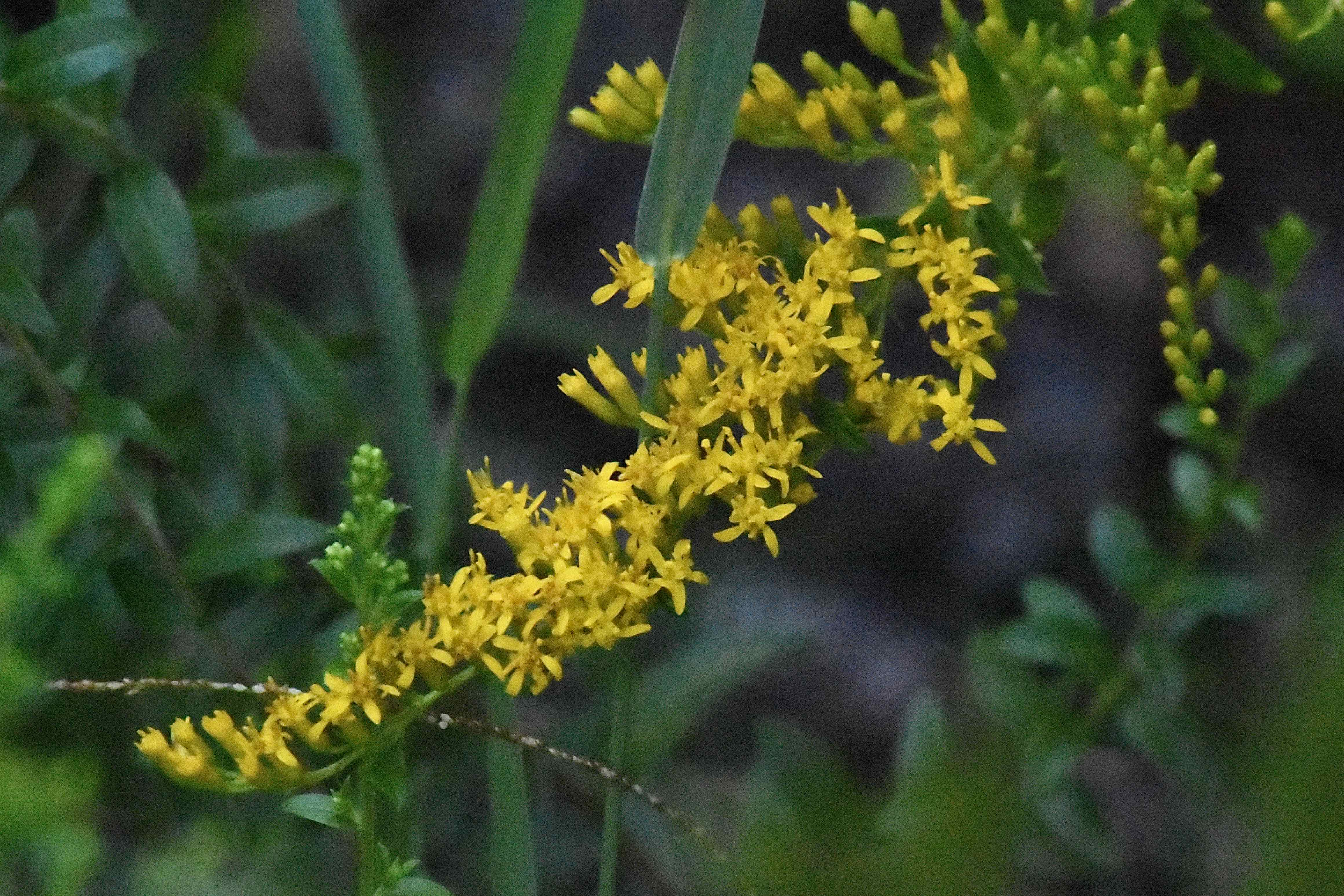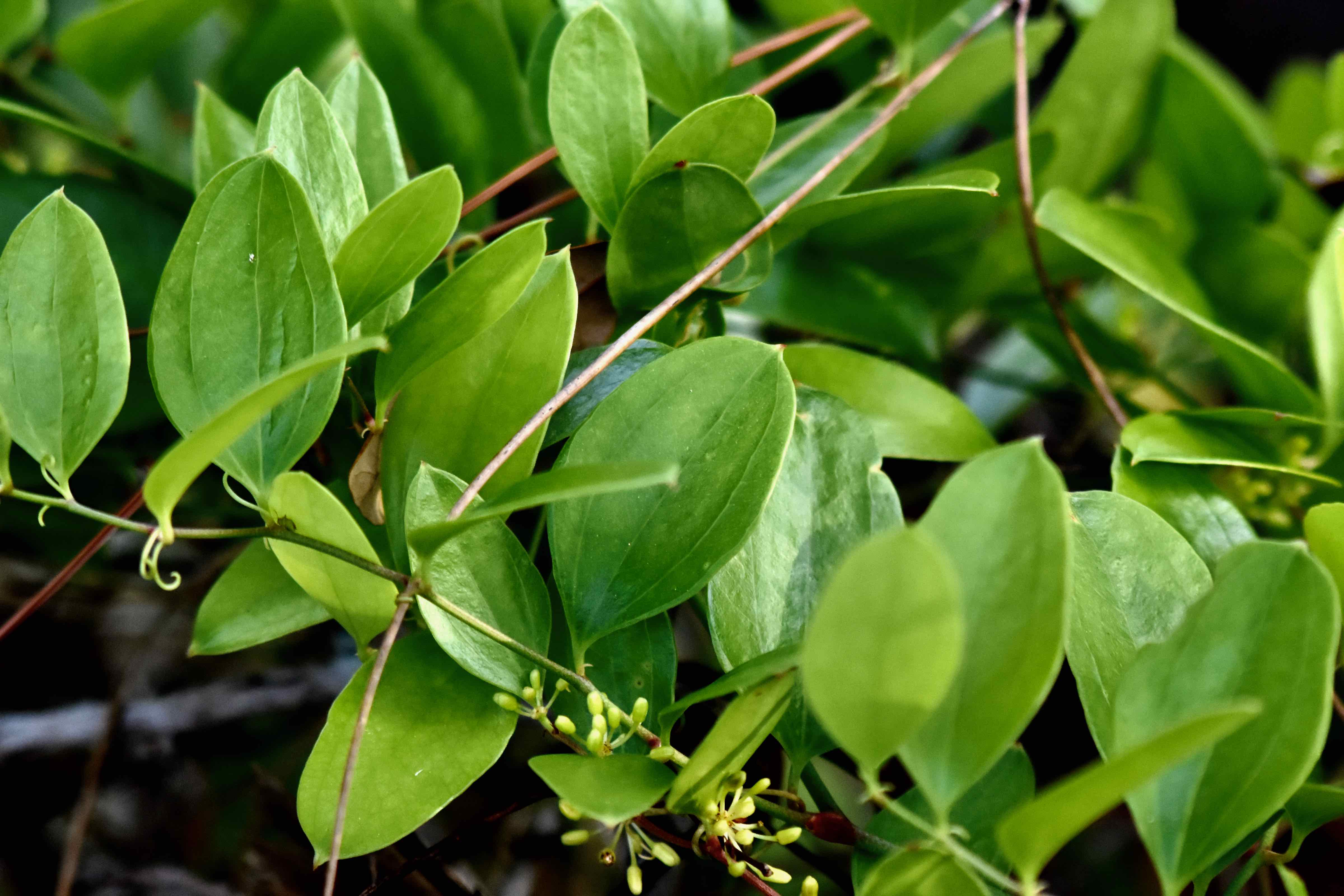Few of Palm Beach County's network of preserves are more aptly named than Delray Oaks Natural Area in the southern end of the county. Dozens of old live oaks that managed to evade the developer's chainsaw and bulldozer dominate most of the natural area's 24.58 acres. They are living works of art, in turn providing life to resurrection fern, airplants, squirrels, lizards and birds. Four habitats lie within Delray Oaks: strand swamp, prairie hammock, xeric hammock, and mesic flatwoods.
History: Go back a few thousand years, and the land that is now Delray Oaks Natural Area was a small island sitting in a marshy estuary that emptied into the Atlantic Ocean. As sea levels fell, the estuary was cut off from the sea and became a freshwater marsh that drained into the Hillsborough River to the south. Construction of canals in the area beginning in the 1920s drained the marsh and opened the area to farming and eventually to commercial and residential development. According to county records, the land that's now the natural area was never cleared for farming or other uses, but it was hardly untouched. Some 2,000 tires, several cars and parts of cars, plus sundry junk and garbage had to be removed before Palm Beach County took ownership in 1995.
What You'll See: Live oaks. Lots of live oaks. Plus laurel oaks, sand oaks and myrtle oaks. But there's more here. In places, cabbage palms dominate the canopy, while ferns rule below. Toward the western boundary of the natural area, there's a dense stand of pines. In light gaps, you'll find tarflower, partridge pea and goldenrod. There is coinvine and muscadine, staggerbush and blueberry. If you're lucky, you might spot one of the resident gopher tortoises. There are cardinals and blue jays and mockingbirds; in the cooler months, look for migrating American redstarts, black-and-white warblers and more.
Amenities: There are two trails, the 0.29 Live Oak Trail, which is paved, and the 0.20 natural surface Beautyberry Trail. The Live Oak Trail leads to an observation platform overlooking a strand swamp. There are benches along the way and interpretive signs — some fairly recently installed as part of a Boy Scout project. The Beautyberry Trail loops off the main trail and ultimately recommects. There is plenty of parking for the size of the natural area but no drinking water or restrooms.
Nearby: The municipally owned Leon M. Weekes Environmental Preserve sits several miles to the east just off the FEC Railroad Tracks. Atlantic Dunes Park is farther east along A1A. Yamato Scrub Natural Area is a short drive south off Clint Moore Road in Boca Raton. Likewise, Pondhawk Natural Area is to the southwest on Spanish River Boulevard.
Links: The Institute for Regional Conservation's inventory of plants is here. The IRC helped write the 1997 management plan for Delray Oaks. The Great Florida Birding Trail's take on Delray Oaks is here.
Cover Photo: There is nothing more representative of Delray Oaks Natural Area than the magnificent live oaks that dominate the canopy here. They are nature's works of art.
History: Go back a few thousand years, and the land that is now Delray Oaks Natural Area was a small island sitting in a marshy estuary that emptied into the Atlantic Ocean. As sea levels fell, the estuary was cut off from the sea and became a freshwater marsh that drained into the Hillsborough River to the south. Construction of canals in the area beginning in the 1920s drained the marsh and opened the area to farming and eventually to commercial and residential development. According to county records, the land that's now the natural area was never cleared for farming or other uses, but it was hardly untouched. Some 2,000 tires, several cars and parts of cars, plus sundry junk and garbage had to be removed before Palm Beach County took ownership in 1995.
What You'll See: Live oaks. Lots of live oaks. Plus laurel oaks, sand oaks and myrtle oaks. But there's more here. In places, cabbage palms dominate the canopy, while ferns rule below. Toward the western boundary of the natural area, there's a dense stand of pines. In light gaps, you'll find tarflower, partridge pea and goldenrod. There is coinvine and muscadine, staggerbush and blueberry. If you're lucky, you might spot one of the resident gopher tortoises. There are cardinals and blue jays and mockingbirds; in the cooler months, look for migrating American redstarts, black-and-white warblers and more.
Amenities: There are two trails, the 0.29 Live Oak Trail, which is paved, and the 0.20 natural surface Beautyberry Trail. The Live Oak Trail leads to an observation platform overlooking a strand swamp. There are benches along the way and interpretive signs — some fairly recently installed as part of a Boy Scout project. The Beautyberry Trail loops off the main trail and ultimately recommects. There is plenty of parking for the size of the natural area but no drinking water or restrooms.
Nearby: The municipally owned Leon M. Weekes Environmental Preserve sits several miles to the east just off the FEC Railroad Tracks. Atlantic Dunes Park is farther east along A1A. Yamato Scrub Natural Area is a short drive south off Clint Moore Road in Boca Raton. Likewise, Pondhawk Natural Area is to the southwest on Spanish River Boulevard.
Links: The Institute for Regional Conservation's inventory of plants is here. The IRC helped write the 1997 management plan for Delray Oaks. The Great Florida Birding Trail's take on Delray Oaks is here.
Cover Photo: There is nothing more representative of Delray Oaks Natural Area than the magnificent live oaks that dominate the canopy here. They are nature's works of art.

